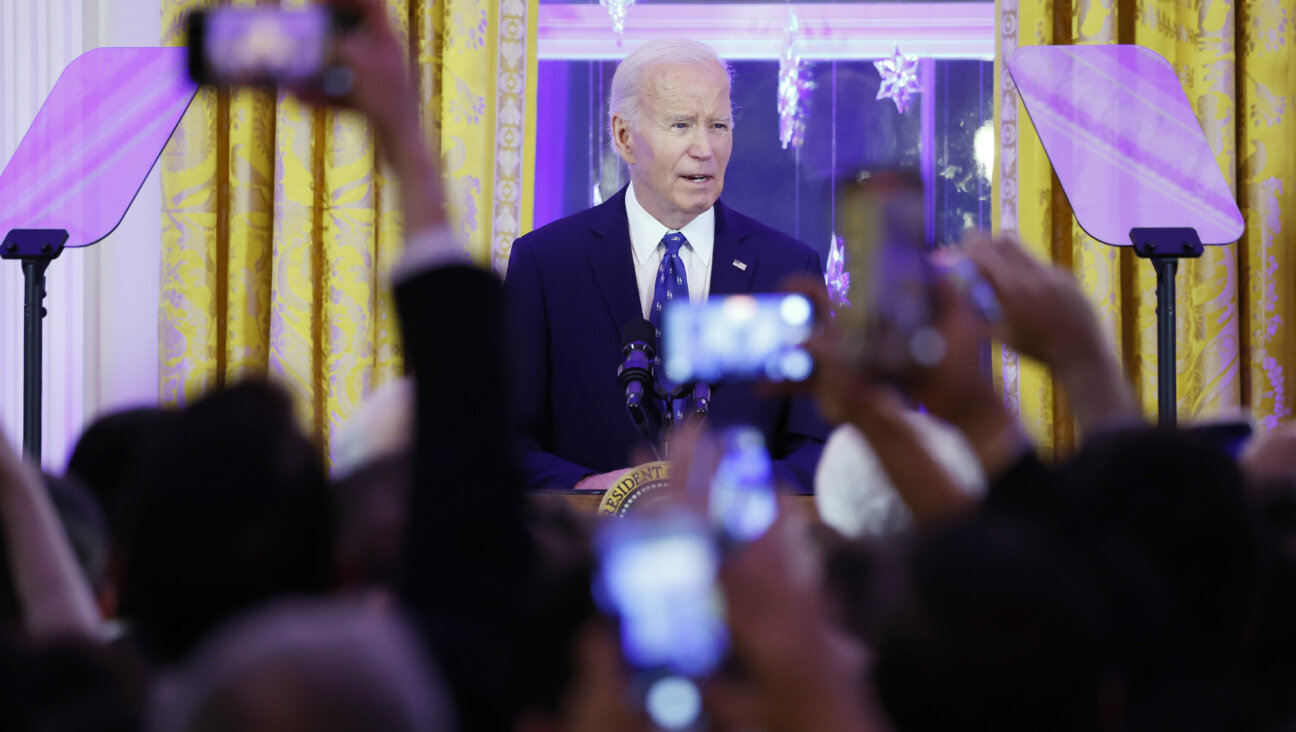Pushing Foundations To Give Everything They Have
Lewis B. Cullman made a fortune as a businessman, but he has spent much of his life giving it away. He traces his passion for philanthropy to his mother, who inspired him to donate his fortune to worthy causes. “Why not get some pleasure out of it,” she said to him many years ago, “instead of just having it written up after you’re gone?”
Cullman, now 85, took his mother’s words to heart, giving away more than $100 million. In his new book, “Can’t Take It With You: The Art of Making and Giving Money” (John Wiley & Sons), he shares the story of how he made his personal fortune, and explains why he views philanthropy as a joy rather than as an obligation. After giving away so much of his fortune, Cullman is speaking out, advising private charitable foundations to give away their money — millions more than they have in the past — even if it puts them out of business.
To them and to the wealthy individuals who aren’t philanthropists at all, he says: “How much does a person need to live on? Ten million? Twenty?…. Why not have the pleasure of giving away the rest?”
Cullman comes from a notable old family. His cousins include poet Emma Lazarus and Supreme Court Justice Benjamin Cardozo, as well as the founder of Barnard College and one of the founders of the New York Stock Exchange. His family made a sizable fortune in the tobacco business, which could have guaranteed Cullman’s financial future. But he refused to work in tobacco, opting instead to seek his fortune on his own.
In 1963, Cullman made financial history by co-creating the very first leveraged buyout, or LBO, using $1,000 in cash to buy a pest-extermination company worth $62 million. Thinking long term, unlike many who pursued LBOs, Cullman further proved his business acumen when he bought a small calendar company and over the next 20 years built it into At-a-Glance, a mammoth manufacturer of date books with annual revenues in the hundreds of millions.
But if he is well known as a financial golden boy, Cullman is better known for donating his millions to causes such as The New York Public Library, Planned Parenthood and Human Rights Watch. He created Chess-in-the-Schools, a foundation that uses chess to build students’ skills and confidence in New York’s poorest schools. And he founded The Dorothy and Lewis B. Cullman Center for Scholars and Writers at the New York Public Library, to support independent scholars, academicians and creative writers not only to do their research, but also to encourage them to “talk with each other.”
Cullman isn’t shy about putting his name — and his wife’s — on the projects he funds; it is one of the incidental benefits of philanthropy, he says. (“If some institution wants to rip Dorothy’s and my name off a wall after we’re dead and gone, I want it to have to hire a damn good lawyer to break the faith.”) His wife’s name comes first when the project relates to the arts, but his name comes first when the subject is scientific, as in the case of his proudest endeavor: The Lewis B. and Dorothy Cullman Program for Molecular Systematics Studies, which he formed as a partnership between the American Museum of Natural History and The New York Botanical Garden, and which has become one of the foremost botanic research institutions in the world.
Cullman believes he is in a unique position to espouse views that might ruffle feathers at major charitable institutions — namely that American philanthropy needs a fundamental shift away from supporting the administrators and toward supporting the producers. “There are very few like me who can speak out,” he said. “Typically, big private foundations are run by bureaucrats, and all the donees have to keep their mouths shut because they’re afraid of being blacklisted.”
Cullman encourages thinking about the business of philanthropy — charitable capital should do real work. “Foundations should spend down their money,” he said. “It doesn’t do any good to have that money sitting there in perpetuity. It should be used for charity. It’s peculiar for private foundations to brag about increasing their assets. I told [Carnegie Corporation President] Vartan Gregorian they should be required to give 5% of the endowment every year to charity. And he said, ‘What? That would put us out of business!’ And I told him, ‘Exactly!’”
Cullman explained: “Private foundations should not last in perpetuity. Maybe 50 years, 30 years — the number is arbitrary, but there should be a limit. Because once the donor’s family is out of the picture, the bureaucracy takes over and is usually interested only in its own survival. Spending and giving are not the same thing. Typical private foundations now give 3% and spend 2% on administration and overhead. Think of 2% of $10 billion — that’s $200 million! Just think what good an institution like the Ford Foundation could do if it spent down its endowment in charity.”
Private foundations in America currently hold around half-a-trillion dollars, Cullman estimates. “Imagine what could be done if that money had to be spent productively instead of being dribbled out.”
He also decries certain philanthropic organizations for unethical financial practices, naming one foundation that recently dismissed its director for unaccounted missing funds and another foundation that spent nearly $1 million in donations to conduct research on hunger in Africa by sending its directors to stay in fancy hotels. “When I do something as a board member,” he said, “I pay my own way.”
“What I’d like to see is transparency,” he said of private foundations’ accounting and administrative practices. “Let the press do the rest.”
Cullman encourages other private philanthropists to dig deep into their pockets, focusing more on what great things they can achieve today and less on what efforts they might endow in the future.
As for Cullman, he has no plans to slow down with his own philanthropic efforts. He retains the vigor of a man decades younger, and he hopes to give away another $100 million.
“My wife told me at the rate we’re giving, she may wind up having to go to the Hebrew Home for the Aged,” he joked. “But then she found out she’ll have to pay to get in.”
A message from our Publisher & CEO Rachel Fishman Feddersen

I hope you appreciated this article. Before you go, I’d like to ask you to please support the Forward’s award-winning, nonprofit journalism during this critical time.
We’ve set a goal to raise $260,000 by December 31. That’s an ambitious goal, but one that will give us the resources we need to invest in the high quality news, opinion, analysis and cultural coverage that isn’t available anywhere else.
If you feel inspired to make an impact, now is the time to give something back. Join us as a member at your most generous level.
— Rachel Fishman Feddersen, Publisher and CEO























